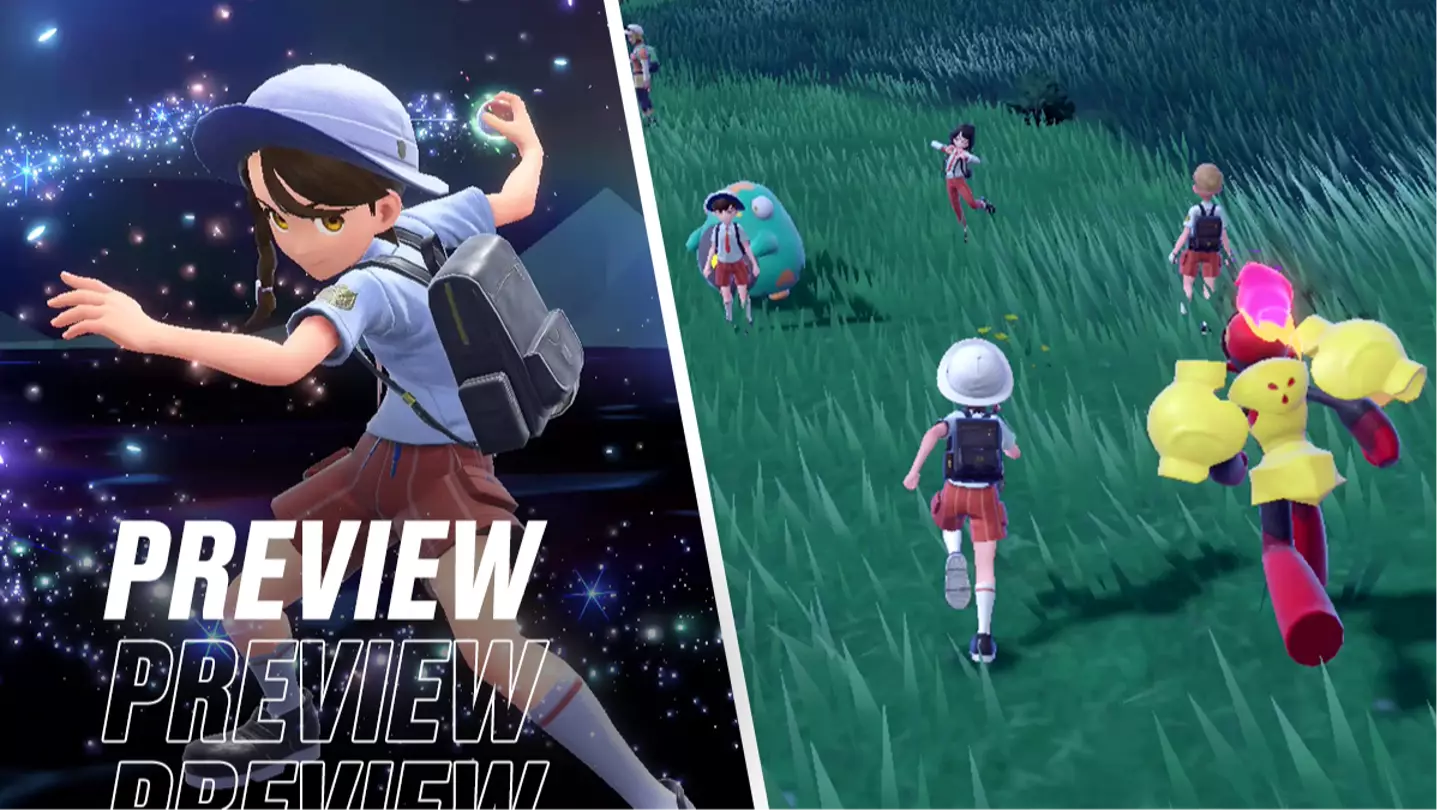
It’s surreal to think it's been three years since Pokémon Sword and Shield were released, bringing the mainline franchise games to Nintendo home consoles. The transition hasn't been smooth to say the least, from the aforementioned Sword and Shield to Legends: Arceus (which only released in January this year!), the Game Freak-developed games have been in the crosshair of some very vicious debates.
From the vitriol behind “Dexit”, where swathes of Pokémon were missing from the National Dex and couldn’t be traded into the latest games, to the quality of the tree textures. Considering just how many there are of the blighters now, Dexit is understandable, and some concerns regarding performance and graphical prowess, at times, are extremely valid.
Check out our Pokémon Scarlet and Violet video preview below.
I only bring this up, as last week I went hands-on with an hour of the latest games in the franchise, Pokémon Scarlet and Violet, in a preview session at the Pokémon Company International offices in London (dream come true moment right there), and although I left my session with a grin on my face, dying to play more, it was hard to ignore some very blatant performance and visual issues in our session. It should be noted early on, the build journalists played was still “in-development”, but exactly how much has been done to address some of these issues before release will be revealed when reviews drop next month.
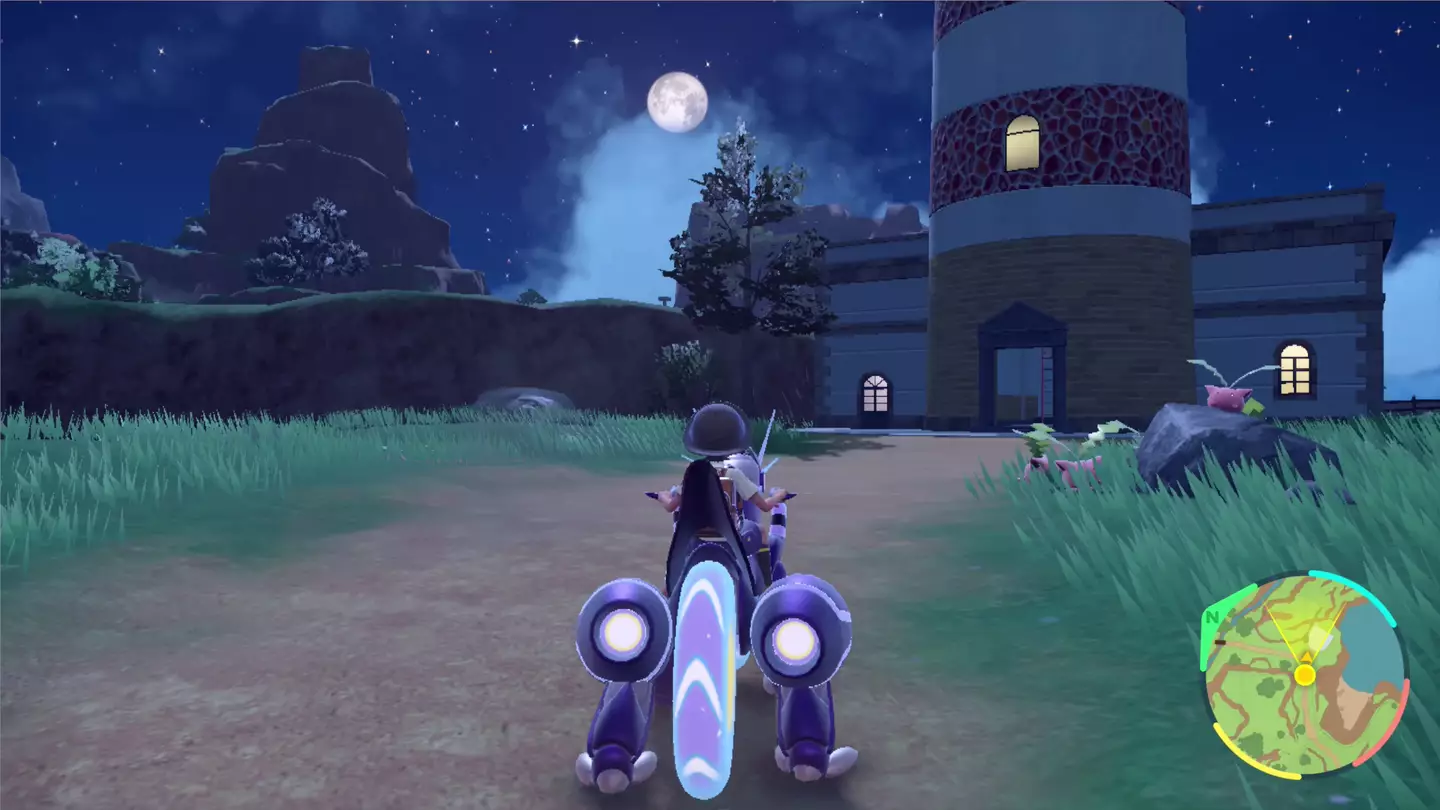
Advert
Before the session began, I was given a rundown of a few helpful details to help set the scene for our jumping-in point. As many of you will know, the new games follow three different story paths to be completed; Victory Road being the most self-explanatory, with eight gym leaders and eight badges. However, there’s also the additions of Path of Legends and Starfall Street, both of which, surprisingly, come with five badges each to earn. Bringing Scarlet and Violet’s badge count up to a whopping 18.
My first steps in the Paldea region are probably similar to those that players will take when the game releases. Starting outside what I assume was the protagonist's home, I ran a few steps down the path to discover a surprising amount of Pokémon out in the wild. The team I was given had been pre-levelled up for the sessions so I made quick work of these starter area monsters. One of the main takeaways instantly from these early battles was how the in-game camera operates during these fights.
Gone is the ability to walk around the battle like in Pokémon Legends: Arceus, and so too is Sword and Shield’s dynamic multiple-camera approach. Instead here you have full 360 degree control of the camera around your own Pokémon. It feels like an evolution of the more classic ‘behind the Pokémon’ setup of old, and having the ability to move the camera around does offer a new dimension to these “in-world” fights. Considering that battles do take place fully in the open world, maybe this was done for technical reasons - but losing the multi-camera approach from last-generation battles feels like a sense of dynamism (pardon the pun) is absent in these fights. It was nice to see other wild Pokémon still wandering around in the background during battles, though.
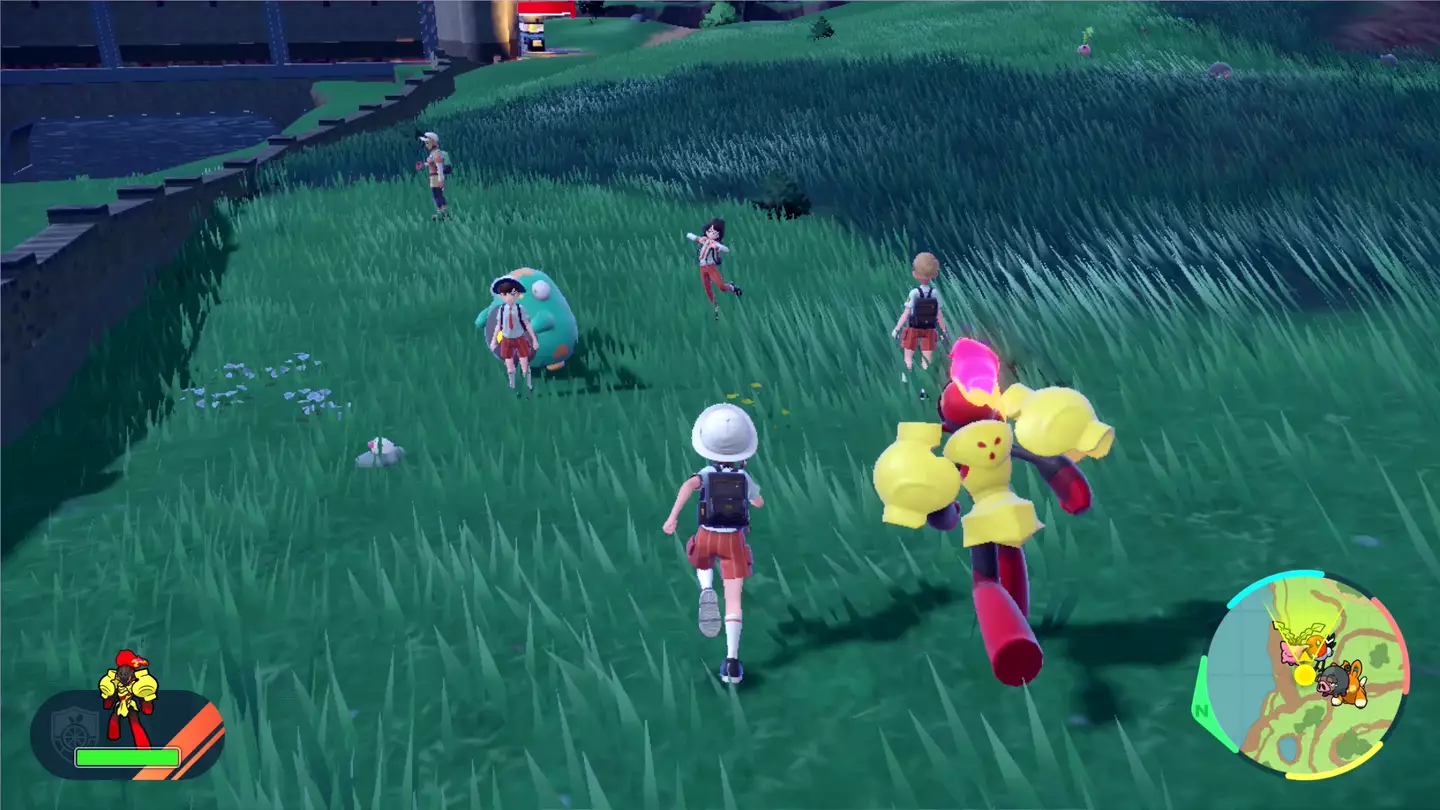
Advert
Getting into wild Pokémon battles can be done in a few different ways. The most obvious is just running up to a Pokémon, but there's also the option to throw your first Pokémon’s Poké Ball at it from a distance, which will then start a standard battle. The final option instead is to direct your follower Pokémon at a wild monster in the overworld and, depending on levelling, this will start an Auto-Battle. Looking at the scale of the Paldea region, this could potentially really help with some of the grind that comes with constant one-on-one wild battles - this is a genuine welcome feature and one that will be helpful when returning to lower-level areas in the future.
The small amount of the world I explored in my session was genuinely delightful and felt a real step up from what we experienced in Legends: Arceus. Where the previous game was mostly large sections of wilderness, Paldea feels more obviously lived in, and to describe what many echoed in my hands-on session, “It feels like playing the anime.”
One of the first things I did in my playthrough was climb a ladder up the inside of what seemed to be a lookout tower and, once at the top, glide off using Scarlet’s cover legendary, Koraidon. Gliding down I found myself landing in a small village on the outskirts of Paldea’s largest city, Mesagoza. It was here I realised how incredibly powerful both Koraidon and Miraidon are for traversal in this world.
This is a Pokémon region with a surprising amount of verticality, which means traversing to out-of-the-way areas feels enjoyable. Where in Legends: Arceus the player had to switch Pokémon to take advantage of their traversal skills, here Miraidon and Koraidon can seemingly do it all out of the bag, really letting you focus on progressing freely without barriers.
Advert
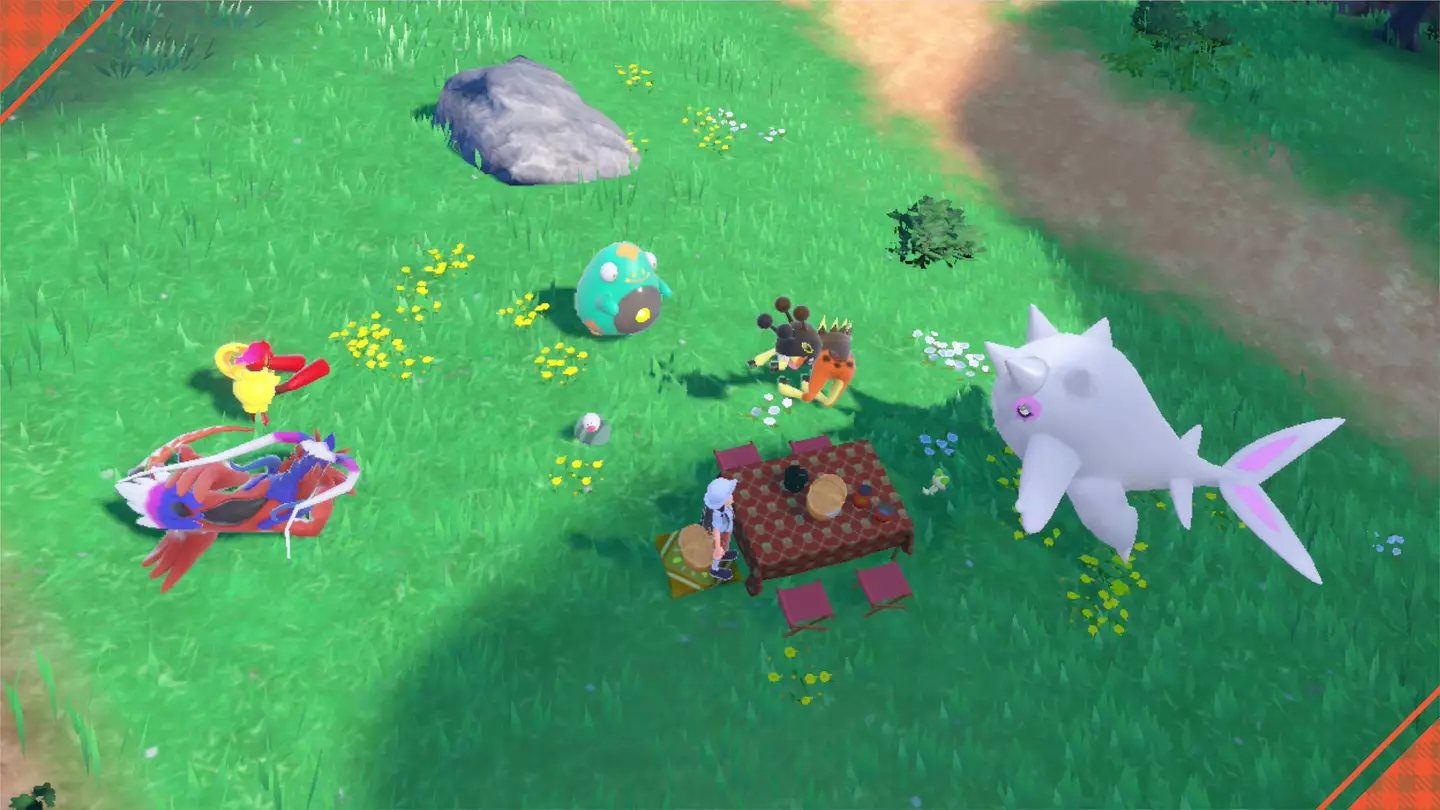
I did find a strange side effect of this when climbing the exterior walls of Mesagoza. I had wrongly assumed that like the smaller village on the outskirts, the city would be a part of the main world, so I could just wander in barrier-free. Instead, as I clambered up the side of the stone wall on my trusty Koraidon and reached the top, the game faded to black and then faded back in with my player stood inside the city walls, as if she had just entered through the large gates behind me. It's not a killer that this city is pretty much one big interior and needs to transition, open world games have been doing this for years, but for that moment it broke the illusion of a fully open world.
Mesagoza is the largest city ever in any Pokémon game and it really shows. I didn’t get a chance to explore the many intricacies, but with multiple layers and off-shoot roads, there’s a lot here to explore, especially with the school placed at the very top.
One aspect that disappointed me, was something I had strangely predicted when the “petrol station” style Pokémon Centers were first shown - a lot of buildings are either entirely closed off, or in the case of shops, are just doorways to menus. In Mesagoza I stepped into multiple clothes and food stores only to be greeted by a menu of what was available to buy, with no actual traversable interior.
Advert
Obviously, this goes back to the resource put into the open world, but after years of walking into almost any building in Pokémon games for a cheeky gander, not being able to enter most homes or having stores replaced with menus starts to strip away the layers of immersion in this open world. The only store I personally found in my session with an interior was the hair salon.
Taking the above into account, I did buy a mint chocolate chip ice cream from a vendor, and what followed was one of the most adorable animations I’ve seen in a Pokémon game. The best way to describe it is like a floating heads sequence from an anime intro of my trainer enjoying the treat while the seemingly elated faces of my Pokémon floated by in the background. Also eating the ice cream applied a couple of buffs; Raid power: Fairy, Humongo Power: Steel, and Egg Power.
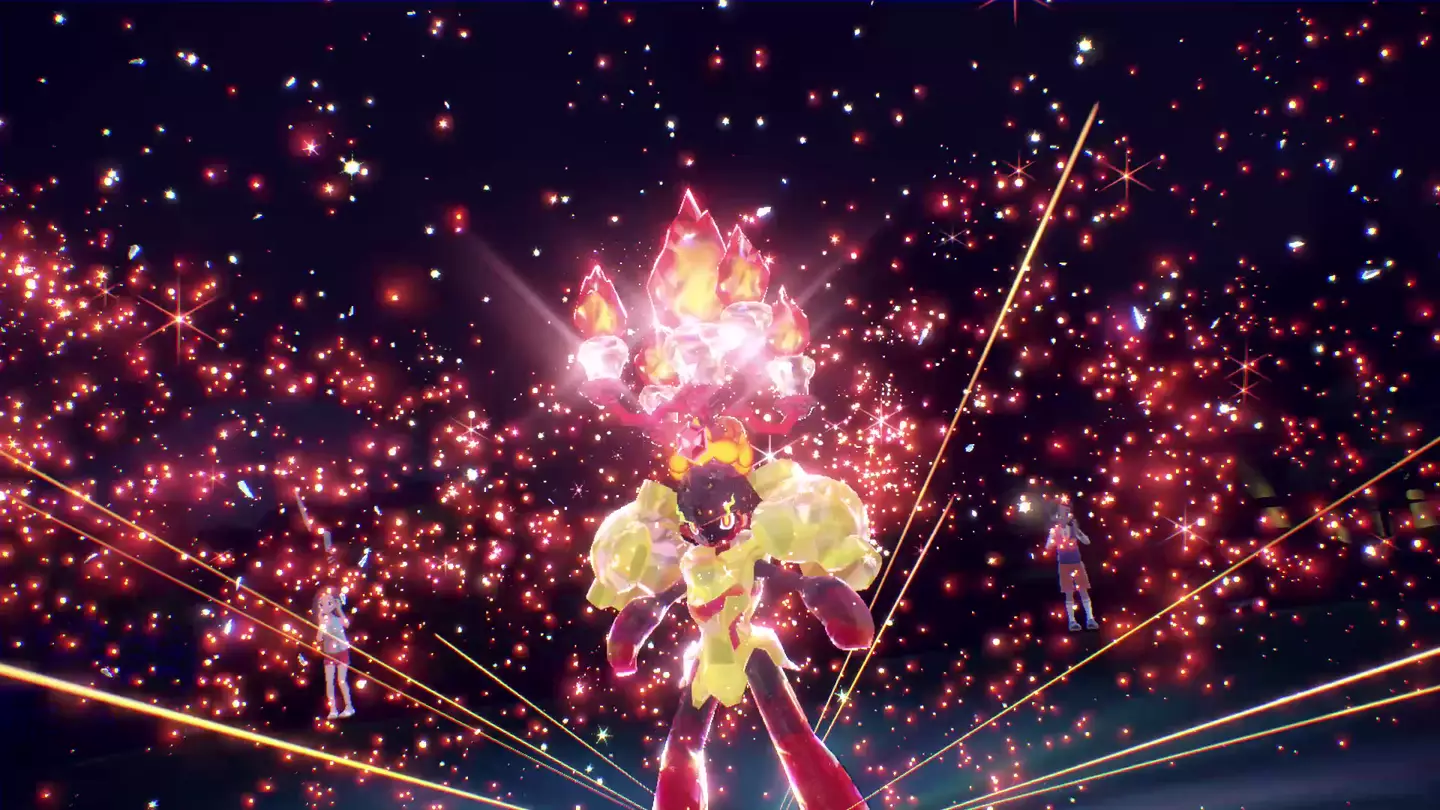
At the end of the single-player portion of my hands-on, I went up against what seemed to be the closest gym leader to the starting area, the Artazon gym leader, Brassius. But not before a quick gym challenge to hunt down 10 Sunflora that were hidden around the town. It wasn’t a tough challenge, but a cute way of showing Pokémon interacting with the world, in a similar way to hunting down the Bidoof in Legends: Arceus.
Advert
We’ve already seen Brassius in trailers so seeing him throw out a Sudowoodo and terastalize it to become a grass type was no surprise. What was surprising though was how badass Armarouge looked in Terastalize form. I didn’t get much chance to explore the depth of the new battle gimmick (an hour just isn't long enough!), but before our session we were given access to a quick graphic explaining how the phenomena will affect a Pokémon in battle:
Pikachu with Electric Teratype:
Electric x 1.5 = x2
Pikachu with Flying Teratype
Electric = x1.5
Flying = x1.5
After defeating Brassius my time playing solo was up, but that meant it was time to hit up the multiplayer. There was so much I didn’t manage to check out in this one sitting. Starfall Street eluded me, so I wasn't able to try out the large-scale auto battles against Team Star. I also missed out on the Path of Legends, never going head-to-head with the massive Klawf.
Fortunately, I did take away a generally positive experience from what I played, even with the many technical problems that I encountered (I never even mentioned the extremely low frame rate walking animations of NPCs in the lightly populated town outside of Mesagoza), but as I mentioned at the start, this is a work-in-progress build.
The new Pokémon designs are genuinely great - I’m a huge fan of Armarouge, Lechonk and Bellibolt - and the new region of Paldea seems endearing and I’m raring to fully explore every nook and cranny.
Next up, we were split up into teams of four to check out the new Tera Raid Battles, and I tell you now, I wasn’t a fan. The camera is static throughout the entire battle, meaning you can barely see the rest of your friends and their Pokémon. It’s not something that affects the flow of battle, but completely removes any of the cinematic nature of such a large-scale fight.
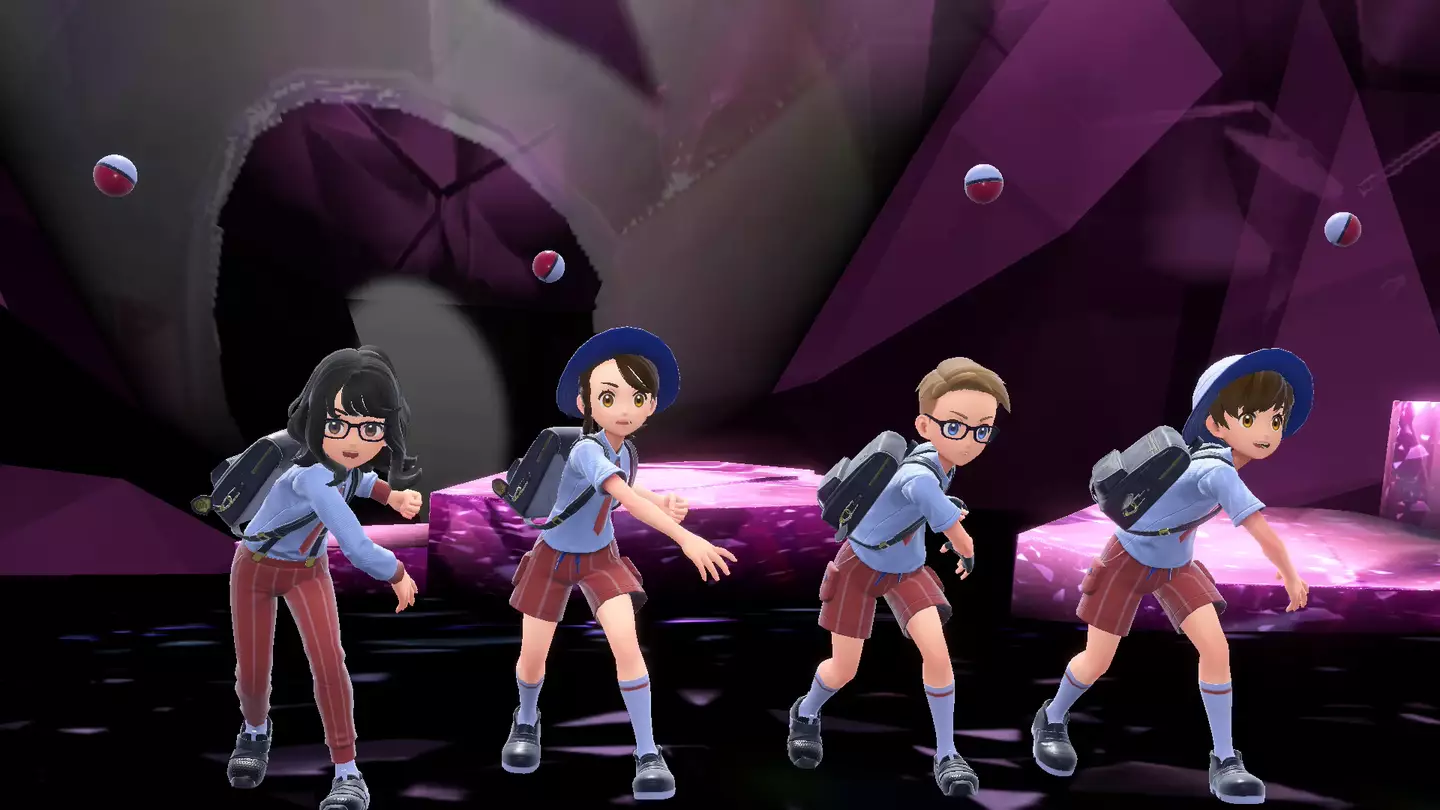
In context this makes sense as Tera Raid Battles are supposed to be less of a turn-based affair, offering you the ability to spam attacks as you like, but that's not how it works in reality. I spent swathes of time in our Tera Raid Battle sitting on my hands waiting till I was able to attack next. Not having the dynamic camera bouncing between my teammates to show their attacks (or even highlight my own) made the whole experience a dull affair. I was only able to battle in one Tera Raid Battle, so maybe there was somebody on my team taking their time making decisions, holding up the fight - but as a first glimpse at these new raids, I came away disappointed.
On the other hand, teaming up with a couple of pals in the overworld is a genuinely fun, if not slightly shallow, experience. Getting the gang all together on the back of their legendary bike Pokémon and riding across the Paldea region like some sort of magical biker gang is a joy, as is everyone bringing out their poké pals for a quick picnic.
Weirdly, you can’t walk up to a friend to instigate a trade (all of these things still need to be done from a separate menu), but with the more in-depth customisation, and ability to explore together, I can see many Pokémon fans choosing to hang out with their pals together in Paldea as a social hub, especially with the new photo mode letting groups take a cheeky selfie.
The hour and a half of Pokémon Scarlet and Violet I played felt rough around the edges in more than a few ways, but at the end of the day (and every day since then), I’ve desperately wanted to dive back in and continue my Paldean journey. I hope many of the performance issues are resolved for the final release because I can see those overshadowing what felt like another fresh and upgraded take on the Pokémon formula.
Topics: Pokemon, Nintendo Switch, Preview